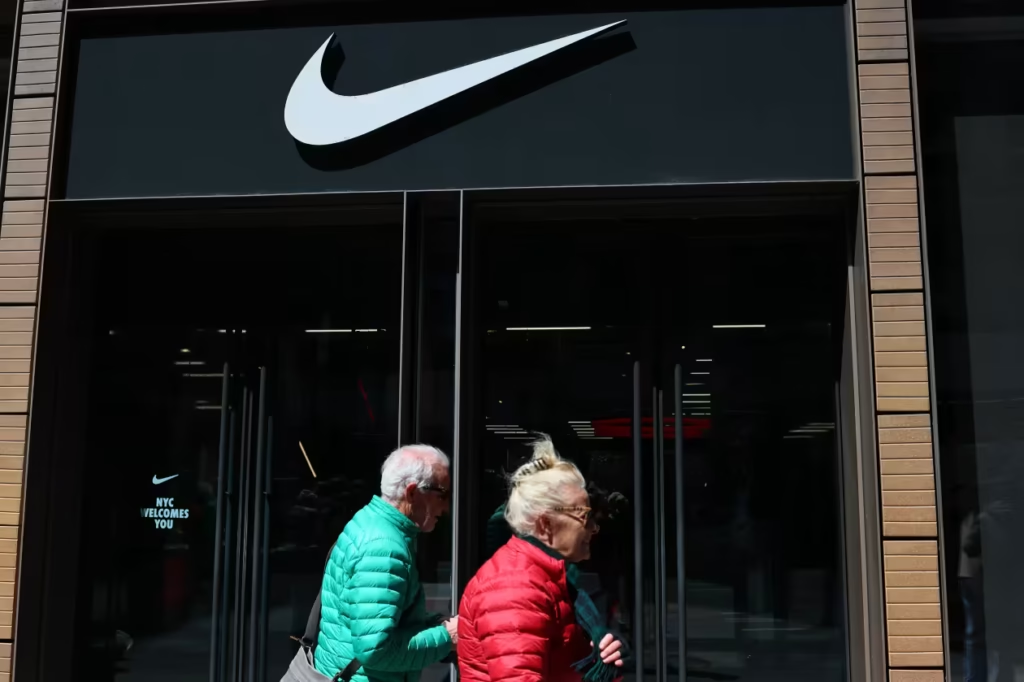On Wednesday, Nike’s stock increased by over 6%.
Nike Inc.’s hegemony over the sneaker market has been eroded in recent years by competitors. However, some experts believe the company may begin to regain lost revenue after the athletic-gear giant’s longer-term financial outlook provided a rare bright spot for investors.
Randal Konik, a Jefferies analyst, stated in a research note on Wednesday that rival On Running (ONON) “may face mounting pressure” to maintain its own high retail sales growth due to Nike’s (NKE) significant sales gains, namely a 20% increase in the company’s most recent quarter. He went on to say that a smaller product variety and expensive shoe assortment costs were examples of limitations.
Nike announced on Tuesday’s results call that it had improved the cushioning and stability of its Vomero, Structure, and Pegasus running shoes. The business said that their actions struck a chord with consumers.
Additionally, Konik stated in a separate note that some of Nike’s smaller athleisure-focused competitors faced challenges due to Nike’s lower sales in China, where the country’s economy has been rocked by the U.S. trade war and housing crisis.
He specifically claimed that Nike’s 9% decline in Greater China sales undermined Lululemon Athletica Inc.’s (LULU) projections of significant sales increases in that region by the following year. According to his statement, Nike’s challenges indicate that Lululemon “will struggle to hit its ambitious targets in the region.”
Given that similar products from China-based Anta Sports Products Ltd. (HK:2020) (ANPDY) cost between $28 and $35, he claimed that Lululemon’s “premium” pricing of $120 to $153 for leggings “is a clear disadvantage in a market where value and local relevance are increasingly important.” He pointed out that in China, local competition had grown more dangerous. Nike stated on Tuesday that it needed to improve sales through its own stores and its sportswear segment in addition to sales in China.
Nike’s first-quarter financial results Tuesday exceeded forecasts thanks to a 7% rise in retail sales. Following challenges with strapped consumers, gains from competitors, and an overestimation of demand for lifestyle sneakers like the Dunk, management stated that the company’s turnaround would “not be linear as dimensions of our business recover on different timelines.”
The business said it anticipates tariffs will cost it about $1.5 billion, which is more than previous predictions, and predicted a decline in sales for its second quarter. In contrast, it predicted that outside retailer sales will “return to modest growth” throughout the course of the fiscal year, which includes May.
Nike’s stock ended Wednesday’s regular trading session 6.4% higher. This year, the stock is still down 1.9%.
Konik also mentioned the impressive sell-through of Nike’s recently redesigned Phantom 6 soccer sneakers. According to him, Nike’s fiscal first quarter sales in North America increased by 4%, signaling a return to growth. BofA analyst Lorraine Hutchinson called the victories in running and North America “early wins.”
Nike’s story is expected to remain favorable, according to Raymond James analysts, but they projected “limited stock upside,” with the majority of the positive news already factored in.
However, they also mentioned that newer products were selling well and that the World Cup the next year offers a greater chance. The analysts pointed out that the corporation was making headway in purging its excess of undesired lifestyle footwear. Additionally, Nike stated that the segment might serve as a model for improvements elsewhere because they intend to introduce one key running shoe style per season.
“We see the strong acceleration in running as a reason for cautious optimism that Nike can apply its learnings across other categories,” the analysts at Raymond James stated.





